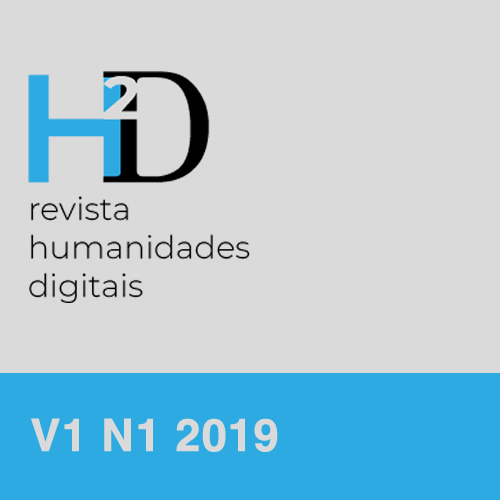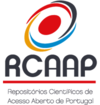Post-editing and legal translation
DOI:
https://doi.org/10.21814/h2d.237Palavras-chave:
post-editing, legal translation, machine translationResumo
At UNINT, the courses dedicated to technologies are inspired by the principles of PBL (project-based learning) and experiential learning. Following this approach, in the courses dedicated to assisted and automatic translation the students perform experiments to test some aspects or address problems that are detected through the observation of the translation industry: i.e., the compatibility of screen readers with CATs for blind users, the testing of Adaptive Machine Translation (AMT) systems being developed, the verification of the usefulness of the output of Machine Translation (MT) not only for translators but also for interpreters. This year, during the automatic translation and post-editing laboratory, thanks to the interdisciplinary nature of the courses dealing with translation technologies, a group of students carried out experiments on materials made available by the teacher of active legal translation module. The aim was to verify how effective the automatic translation integrated with the assisted translation from Italian into English was on a determined type of text, using procedures like pre-editing, the creation of ad hoc translation memories based on legacy material and the automatic verification of terminology through the creation of specific glossaries.
Downloads
Referências
Bentivogli, L., Bisazza, A., Cettolo, M., & Federico, M. (2016). Neural versus Phrase-Based Machine Translation Quality: a Case Study. doi: https://doi.org/10.18653/v1/d16-1025
Bernardi, L. (2016). Il pre-editing e la traduzione automatica. Fondazione Milano. url: http://www.fondazionemilano.eu/blogpress/weaver/2016/03/19/regole-per-il-pre-editing/
Bojar, O., Chatterjee, R., Federmann, C., Graham, Y., Haddow, B., Huck, M., ... Zampieri, M. (2016). Findings of the 2016 Conference on Machine Translation (WMT16). In Proceedings of the First Conference on Machine Translation, Volume 2: Shared Task Papers (pp. 131-198). Berlin, Germany: Association for Computational Linguistics. doi: https://doi.org/10.18653/v1/w16-2301
Diño, G. (Dec 18, 2017). 3 Reasons Why Neural Machine Translation is a Breakthrough. Slator. url: https://slator.com/technology/3-reasons-why-neural-machine-translation-is-a-breakthrough/
Fiorito, L. (2005). La traduzione giuridica e il «Legal English» tra Common law e Civil Law. Translation Journal, 9(3). url: http://www.bokorlang.com/journal/33legal.htm
Goutte, C., Cancedda, N., Dymetman, M., & Foster, G. (2008). Learning Machine Translation. Cambridge, London: MIT Press Ltd. doi: https://doi.org/10.7551/mitpress/9780262072977.001.0001
Kit, C., & Wong, T. (2008). Comparative evaluation of online machine translation systems with legal texts. Law Library Journal, 100(2): 299-321. url: https://pdfs.semanticscholar.org/6cb7/04046816107a56f9409e66fede58d67215e0.pdf
Koehn, P., & Knowles, R. (2017). Six Challenges for Neural Machine Translation. In Proceedings of the First Workshop on Neural Machine Translation (pp.28-39). doi: https://doi.org/10.18653/v1/w17-3204
Koehn, P. (2009). Statistical Machine Translation. doi: https://doi.org/10.1017/cbo9780511815829
Lü, Y., Huang, J., & Liu, Q. (2007). Improving Statistical Machine Translation Performance by Training Data Selection and Optimization. In Proceedings of the 2007 Joint Conference on Empirical Methods in Natural Language Processing and Computational Natural Language Learning (pp.343–350). url: http://www.aclweb.org/anthology/D07-1036
Mai, K. (2016). Use of MT/@EC by translators in the European Commission. 2nd ELRC Conference, Brussels. url: http://www.lr-coordination.eu/sites/default/files/Brussels_conference/Mai-K_ELRC-MT%28at%29EC%20in%20DGT_26_10_2016_K.%20Mai.pdf
Megale, F. (2008). Teorie della traduzione giuridica. Fra diritto comparato e Translation Studies. Napoli, Editoriale Scientifica. doi: https://doi.org/10.7202/045694ar
Muegge, U. (2007). Controlled language: rules for machine translation. url: http://www.muegge.cc/controlled-language.htm
Riediger H., & Galati, G. (2015). La traduzione e il web nell’epoca della traducibilità automatica. Come usare la TA e come scrivere e riscrivere i testi. Fondazione Milano. url: http://www.fondazionemilano.eu/blogpress/weaver/?wpdmact=process&did=NS5ob3RsaW5r
TAUS (2014). Statistical Machine Translation. url: https://www.taus.net/knowledgebase/index.php/Statistical_machine_translation
Tinsley, J. (2017). Neural MT and the legal field. MultiLingual. url: https://www.multilingual.com/article/201706-28.pdf
Toral, A., & Sánchez-Cartagena, V. M. (2017). A Multifaceted Evaluation of Neural versus Phrase-Based Machine Translation for 9 Language Directions. In Proceedings of the 15th Conference of the European Chapter of the Association for Computational Linguistics, 1, (pp.1063-1073). doi: https://doi.org/10.18653/v1/e17-1100
Vashee, K. (Jun 1, 2018). Why Machine Translation Matters in the Modern Era. CMS WiRe. url: https://www.cmswire.com/customer-experience/why-machine-translation-matters-in-the-modern-era
Downloads
Publicado
Como Citar
Edição
Secção
Licença
Direitos de Autor (c) 2019 Digital Humanities Journal

Este trabalho encontra-se publicado com a Licença Internacional Creative Commons Atribuição 4.0.






